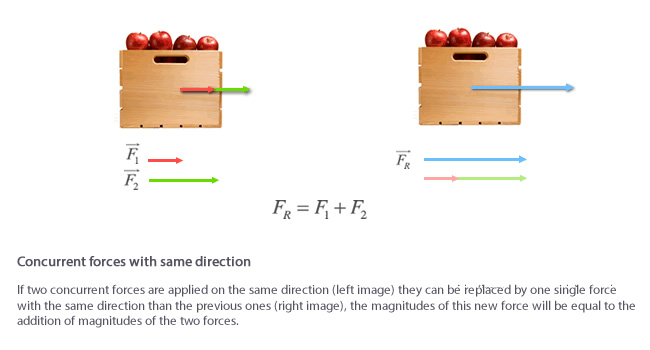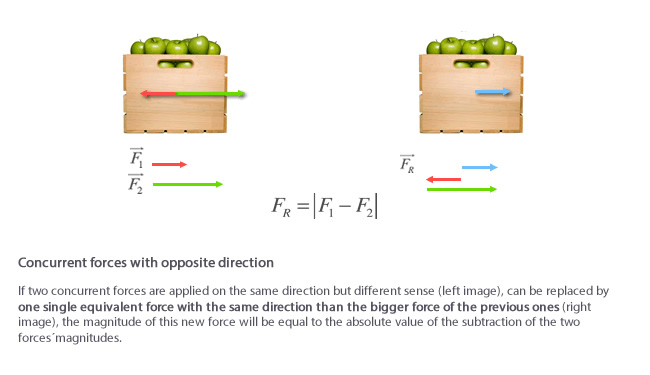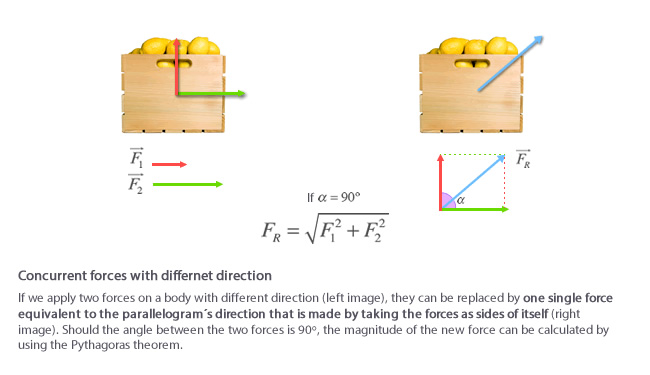It is commonly known that a body is always submitted to the action of two or more forces. On these cases, the effect as a whole can be represented throughout a single force that cause the same effect on all the forces and which is called resultant force. We will study:
Ready to add forces?
Concurrent forces addition
When a body is submitted to the action of two or more forces (system of forces), their effects can be replaced by the action of a single force called resultant force. The process through we calculate the resultant force is called addition of forces.
The resultant force or total force of a system of forces is obtained by the vector addition of al the forces acting over the body:
Since we know that every force on the plane OXY can be decomposed depending on its cartesian axes, then:
Clarifications
On this topic we consider concurrent forces, whose application point will always be the geometrical centre of the body. This consideration gives room to translational motion, otherwise, rotational motion could take place as we will see on advanced levels.
Particular cases
We will study different cases:
- Forces acting on the same direction
- Forces acting on opposite direction
- Forces acting on any direction




